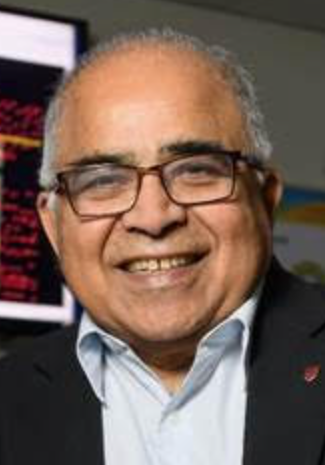Anjan Bose / Washington State University
website
bose@wsu.edu
Title: Increasing data streams for power grid operation
Date: January 24, 2022
Bio:Anjan Bose is a Regents Professor and the Distinguished Professor of Electric Power Engineering at Washington State University in Pullman, Washington, where he also served as the Dean of the College of Engineering & Architecture (1998-2005). In 2012-13 he served as a Senior Advisor to the US Department of Energy on the electric power grid during the Obama Administration. He has worked in the electric power industry as well as academe for over 40 years. Dr. Bose is a Member of the US National Academy of Engineering, as well as those of China and India. He is a Fellow of the IEEE which has awarded him the Halperin T&D Award, Distinguished Power Educator Award and the Millennium Medal. He is also the recipient of the CIGRE Medal.
Abstract:The real-time measurement data that are streamed to the control centers are increasing, both in volume and in type. PMU data and AMI data are new types of data that are being handled by EMS and DMS respectively. The DMS data volumes are increasing because of monitoring of generators, active loads, storage devices and intelligent switches in the distribution systems. In addition, these control centers are adding functions which generate more calculated data that needs to be shared with neighboring control centers. This data sharing can be hierarchical between EMS and DMS but also horizontal between neighboring EMS or neighboring DMS. This streaming of data from the field to the control centers and between control centers is highlighting the need for communication networks that are networked rather than just supplying a central server. The database design for such data needs to become much more distributed than today’s centralized design.
Learning Material: Talk Flyer Talk Slides
Interacting Material:
- Papers
- Definition and classification of power system stability
- Stability simulation of wind turbine systems
- Power system control centers: past, present, and future
- Smart transmission grid applications and their supporting infrastructure
- Design of wide-area damping controllers for interarea oscillations
- Designing the next generation of real-time control, communication, and computations for large power systems
- Definition and classification of power system stability
- Stability simulation of wind turbine systems
- Power system control centers: past, present, and future
- Smart transmission grid applications and their supporting infrastructure
- Design of wide-area damping controllers for interarea oscillations
- Designing the next generation of real-time control, communication, and computations for large power systems
counter forum
